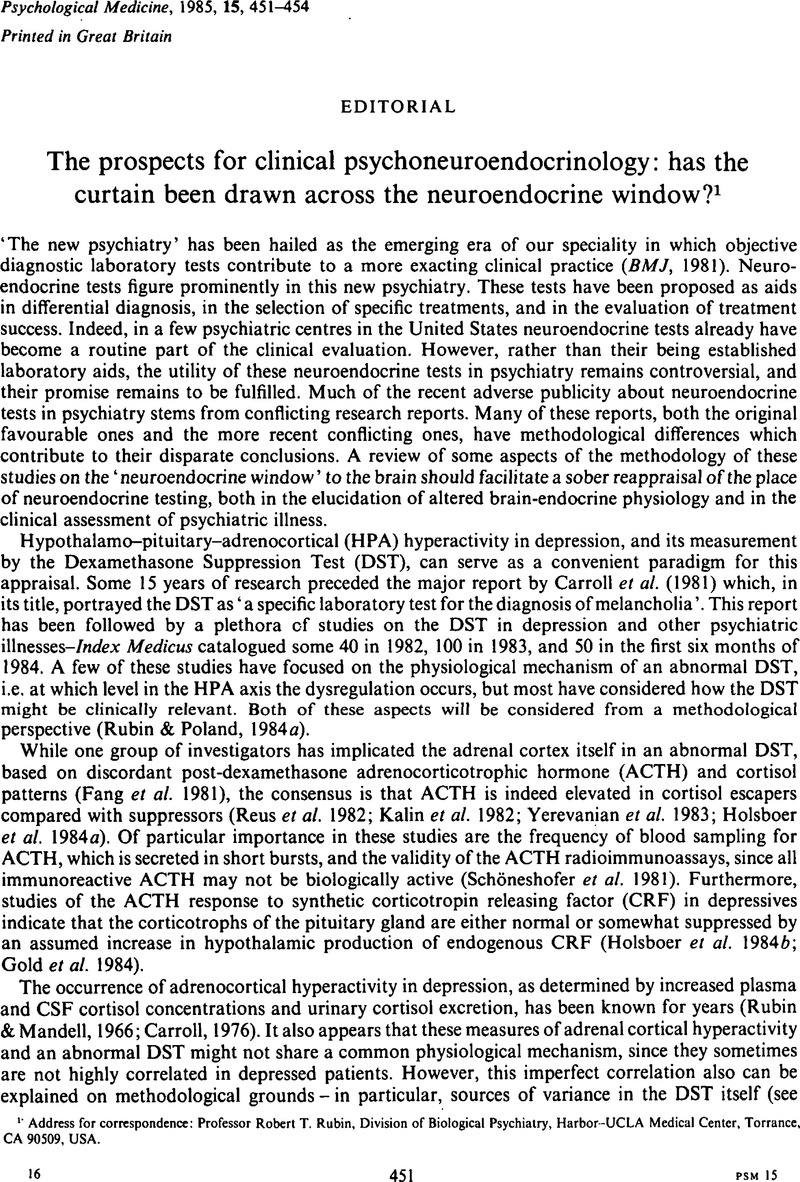Crossref Citations
This article has been cited by the following publications. This list is generated based on data provided by Crossref.
Grunberg, Frédéric
1986.
Reflections on the Specificity of Psychiatry.
The Canadian Journal of Psychiatry,
Vol. 31,
Issue. 9,
p.
799.
Eisenberg, Leon
1986.
Mindlessness and Brainlessness in Psychiatry.
British Journal of Psychiatry,
Vol. 148,
Issue. 5,
p.
497.
Steiner, Heir
Werstiuk, Eva S.
and
Seggie, Jo
1987.
Dysregulation of neuroendocrine crossroads: Depression, orcadian rhythms and the retina — A hypothesis.
Progress in Neuro-Psychopharmacology and Biological Psychiatry,
Vol. 11,
Issue. 2-3,
p.
267.
Charlton, B. G.
Leake, A.
Wright, C.
Griffiths, H. W.
and
Ferrier, I. N.
1987.
A Combined Study of Cortisol, ACTH and Dexamethasone Concentrations in Major Depression.
British Journal of Psychiatry,
Vol. 150,
Issue. 6,
p.
791.
Rubin, Robert T.
1989.
Pharmacoendocrinology of major depression.
European Archives of Psychiatry and Neurological Sciences,
Vol. 238,
Issue. 5-6,
p.
259.
Charlton, Bruce G.
and
Ferrier, I. Nicol
1989.
Hypothalamo-pituitary-adrenal axis abnormalities in depression: a review and a model.
Psychological Medicine,
Vol. 19,
Issue. 2,
p.
331.
Charlton, B. G.
and
Ferrier, I. N.
1990.
Neuropsychopharmacology.
p.
540.
Burke, Patrick
and
Puig-Antich, Joaquim
1990.
Handbook of Developmental Psychopathology.
p.
327.
Ferrier, I.N.
1991.
1 Neuroendocrine dysfunction in psychotic disorders (excluding ACTH).
Baillière's Clinical Endocrinology and Metabolism,
Vol. 5,
Issue. 1,
p.
1.
Keks, Nicholas A.
McKenzie, Dean P.
Low, Lee Hun
McGorry, Patrick D.
Hill, Christine
Kulkarni, Jayashri
Singh, Bruce S.
and
Copolov, David L.
1992.
Multidiagnostic evaluation of prolactin response to haloperidol challenge in schizophrenia: Maximal blunting in Kraepelinian patients.
Biological Psychiatry,
Vol. 32,
Issue. 5,
p.
426.
Baptista, Trino
1995.
The teaching of the biological basis of psychiatry.
Progress in Neuro-Psychopharmacology and Biological Psychiatry,
Vol. 19,
Issue. 3,
p.
529.
Rubin, Robert T.
Dinan, Timothy G.
and
Scott, Lucinda V.
2002.
Hormones, Brain and Behavior.
p.
467.
Hu, Jiangfeng
Huang, Qinghua
and
Chen, Xiding
2020.
Environmental regulation, innovation quality and firms’ competitivity―Quasi-natural experiment based on China’s carbon emissions trading pilot.
Economic Research-Ekonomska Istraživanja,
Vol. 33,
Issue. 1,
p.
3307.



